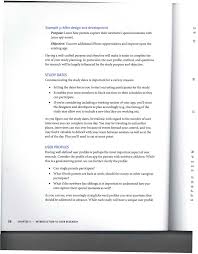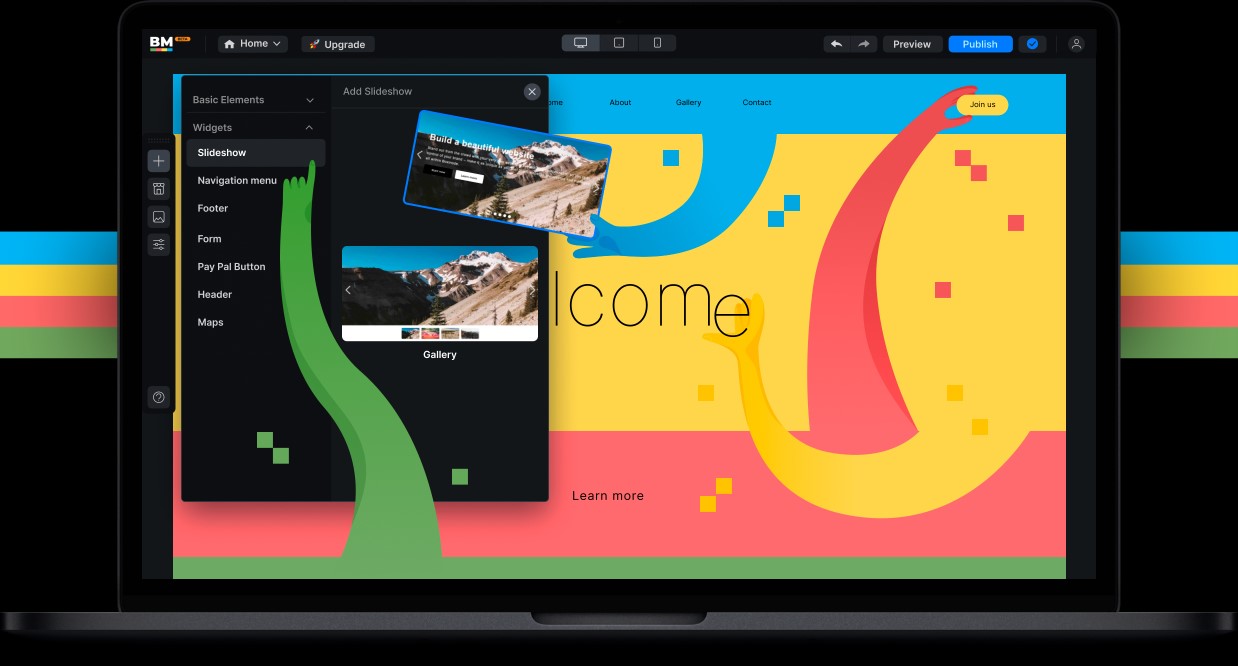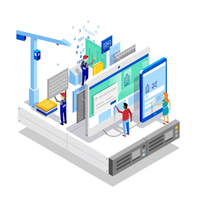
There are some principles that must be considered when designing for mobile phones. These principles include predictability. These principles will ensure users don't become frustrated or lose their patience. Users will enjoy the simplicity of functions like setting an alarm and will not spend longer to accomplish the task. Additionally, mobile users will love simple features such access to content without needing navigate through complicated menus.
Predictability
Predictability refers to the ability to predict future events. Predictability is an essential component of experience. It helps customers perceive a brand better and influences sales growth. Predictability was a key element in McDonald's success. They provide the same food and services to all customers, making them a worldwide phenomenon. McDonald's was able provide the same predictable experience in every store, even though it had only one US location open each day.
It is more enjoyable for users to have a predictable experience with a product. Predictability can reduce mental effort and increase a sense of security. For instance, flow controls must work in the exact same way across the entire product. Visual and function consistency is key to usability, and it improves our ability to learn. Internal consistency is also a motivator for users to try new features.
Legibility
One of the key principles of mobile design is legibility. This means text and symbols must be easily distinguished. It is important that designers consider contrasts between dark and light colors when designing text for mobile devices. According to the Web Content Accessibility Guidelines, the ratio of large text to dark background should be no less than 4.5:1. WebAIM Contrast Checker is a tool that designers can use to verify that the text in their mobile designs are legible.

It is important to make content easy to read on smartphones because of their small screen sizes. Make sure the font sizes are large enough that it is easy to read without zooming. You should also make the interface visually appealing by using whitespace. The more space the mobile user has to read the text, the easier it is for them to understand.
Visual weight
Visual weight is one design principle in mobile design. Visual weight refers simply to the relative weights of design elements. This can be evident, as heavier objects appear to weigh more than smaller ones. A certain color may also appear heavier than the others. Visual weight also refers to symmetry. For a balanced design it is important to maintain equal weight between design elements.
Visual weight is a fundamental design principle. It strengthens visual hierarchy, and guides the user. The goal is to make it easy to use the product by using it in an appropriate manner.
Avoiding error situations
To ensure a great user experience, mobile design must avoid error situations. When errors occur, users will feel frustration and friction. Errors can be caused by user errors or app malfunctions. Your limitations should be taken into consideration and your mobile app should be as simple to use as possible.
You should clearly be able to distinguish error states from normal input fields. Users can recognize errors easily this way. Also, an error in the UI will be interpreted to mean that the feature is disabled. Therefore, it is essential to clearly indicate the error condition.

The creation of a seamless experience
Smartphone users are increasingly dependent on their smartphones and expect mobile experiences that are better than ever. They expect seamless interactions with no dead ends and fast responses. Mobile users require a different approach from designing for desktop. It is essential to understand where the user is likely to start their journey and how it will progress between mobile and traditional channels. This will allow you to design a mobile experience your users will love.
Mobile design also requires that tasks are broken down into smaller chunks. UX design principles that break down tasks into smaller steps have been proven to be effective in mobile. One example is the step-by–step checkout flow. This requires users to complete a series or actions before they are able to purchase. Users can break down difficult tasks so they can move on to the next section of the experience without getting lost or confused.
FAQ
What Kinds Of Websites Should I Make?
This depends on your goals. It may be best to sell online your products to build a company around your website. To do this, you will need to create a strong eCommerce website.
Blogs, portfolios, forums, and other types of websites are also popular. Each requires different skills. You will need to be familiar with blogging platforms like Blogger or WordPress if you wish to create a blog.
It is important to choose the right platform for your site. There are many themes and templates that you can use for free.
Once you've chosen a platform, you can build your website by adding content. You can add images, videos, text, links, and other media to your pages.
You can publish your website online once you have launched it. Once your website is published, visitors will be able to access it in their web browsers.
What is a responsive design web design?
Responsive Web Design (RWD) is an approach to designing websites where content displays responsively on all devices - desktop computers, laptops, tablets, smartphones, etc. This allows visitors to view the website on one device and access other features like buttons, navigation menus, etc. The goal of RWD is to ensure that when a user views a site on any screen size, they view the exact version of the site.
You would, for example, want to make sure that a customer can view your website even on a mobile device.
A responsive website will adjust its layout automatically based on what device is used to view it. A website that is viewed on your laptop will display the same way as a desktop website. It will be different if the page is viewed from your phone.
This allows you create a website that looks great on any device.
Do I Need Any Technical Skills To Design And Build My Site?
No. You just need to be familiar with HTML and CSS. Online tutorials can be found that cover both HTML and CSS.
Do I choose WordPress or a web builder?
It is best to start small in order to establish a web presence. If you have the resources and time to create a fully-fledged website, go for it. A simple blog is a good option if you don’t yet have the necessary resources. As you develop your website design skills, you can always add additional features.
It is essential that you have a primary domain name before you can start your first website. This will allow you to point to your primary domain name when you post content.
What HTML & CSS can I use to create my website?
Yes, you can! You'll need to be familiar with web design concepts and programming languages such HTML (Hyper Text Markup Language), CSS, and CascadingStyle Sheets. These languages can be used to create websites which can then be viewed by everyone who has an internet connection.
What is Website Design Software and How Does It Work?
Website design software is used by graphic artists, photographers, illustrators, writers, and others involved in visual media to create webpages and other digital materials.
There are two main types: cloud-based or desktop software. Desktop apps can be installed on your local computer. They also require that you install additional software. Cloud-based software is hosted remotely over the internet. It does not require you to install additional software, which makes them great for mobile users.
Desktop Applications
While desktop applications offer more advanced features than those in cloud-based solutions, they aren't always necessary. Some people prefer to only use a desktop program because it is easier and more convenient. Others like to use the same tool regardless of whether they are working on a laptop or a smartphone.
Cloud-Based Solutions
Web designers who wish to save time or money should consider a cloud-based option. These services allow you access any type of document to be edited from anywhere on the internet. This allows you to use your tablet while waiting for your coffee maker to brew.
If you decide on a cloud-based solution, you will need to purchase a license. You won't need to purchase additional licenses if you upgrade to a later version.
These programs can be used in Photoshop, InDesign, Illustrator or any other Adobe product to create web pages.
WordPress is it a CMS?
The answer is yes. It is called a Content Management System. CMS allows you control your website content using a web browser and not an application like Dreamweaver, Frontpage or Frontpage.
WordPress is completely free! Hosting is included in the price, but you don't need to pay anything else.
WordPress was initially created as a blogging platform, but it now offers many other options such as eCommerce sites, forums and membership websites. Portfolios are also available.
WordPress is simple and easy to install. You must download the installation file from their website and upload it onto your server. After that, you can simply access your domain name with your web browser.
After installing WordPress, you'll need to register for a username and password. Once you've logged in, you'll see a dashboard where you can access all of your settings.
From this page, you can add images, pages, posts, menus or widgets to your website. If editing and creating new content is easier for you, skip this step.
You can, however, hire a professional Web designer to handle the whole thing if your preference is to work with another person.
Statistics
- The average website user will read about 20% of the text on any given page, so it's crucial to entice them with an appropriate vibe. (websitebuilderexpert.com)
- Studies show that 77% of satisfied customers will recommend your business or service to a friend after having a positive experience. (wix.com)
- It enables you to sell your music directly on your website and keep 100% of the profits. (wix.com)
- It's estimated that in 2022, over 2.14 billion people will purchase goods and services online. (wix.com)
- When choosing your website color scheme, a general rule is to limit yourself to three shades: one primary color (60% of the mix), one secondary color (30%), and one accent color (10%). (wix.com)
External Links
How To
What is Website Hosting?
Website hosting refers simply to the place that people visit when they visit a website. There are two types.
-
Shared hosting - This is the cheapest option. Your website files reside on a server controlled by someone else. Customers visiting your website send their queries over the Internet, to that server. The request is sent to the server's owner who then passes it on to you.
-
Dedicated hosting – This is the most expensive option. Your website resides entirely on one server. Your traffic is private because no other websites have shared space on this server.
Shared hosting is cheaper than dedicated hosting for most businesses. The company hosting the server will provide the resources necessary to manage your website.
Both options have their pros and cons. Here are the differences:
Shared Hosting Pros:
-
Lower Cost
-
Easy To Set Up
-
Frequent Updates
-
It is possible to find it on many web hosting companies
Shared hosting can often cost as little as $10/month. However, this price typically includes bandwidth. Bandwidth refers to the amount of data you can transfer across the Internet. So even if you only upload photos to your blog, you may still pay extra money for high amounts of data transferred through your account.
Once you begin, you will soon see why you spent so much on your previous host. Many shared hosts offer very little customer support. You'll be on your way after they walk you through setting it up.
You'll want to look into a provider that offers 24-hour phone support. They'll take care of any issues that come up while you sleep.
Dedicated Hosting Cons:
-
More Expensive
-
Less common
-
Requires specific skills
With dedicated hosting, all you need to maintain your website are provided. You won’t need to worry whether you have enough bandwidth or enough RAM (random address memory).
This means that upfront, you'll need to spend a bit more. But once your online business starts, you'll realize you don't need any technical assistance. You'll soon be an expert at managing servers.
Which Is Better For My Business:
The answer to this question depends on which type of website you wish to create. Shared hosting is best for those who only need to sell products. It's very easy to setup and maintain. You'll probably receive frequent updates because you are sharing a server hosting many other sites.
However, dedicated web hosting is the best way to build a community around you brand. Instead of worrying about your traffic, you can build your brand while still being able to concentrate on your business.
If you're looking for a web host that offers both options, we recommend Bluehost.com. Bluehost.com provides unlimited monthly data transfer, 24/7 support, free domain registration and a 30-day money back guarantee.